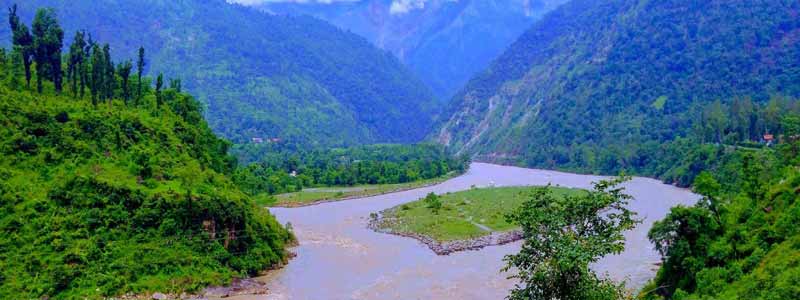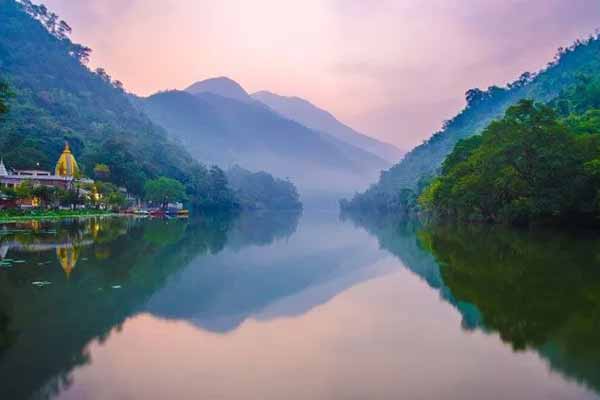Best secret summer destinations in North India Are you looking for a fun spot to visit during your summer vacation? Or are you looking for the best places to visit in North India during the summer? You don’t want to leave your house during the heat. Summers in India are the only place in the world where the summers stay longer than the winters. So why squander your time at home? Get up and begin packing your belongings. Explore some of India’s lesser-known and undiscovered gems.
Being an Indian, you may believe that travelling within India is pointless. It is true to some extent that you do not want to visit destinations in North India, based on your usual behaviour. You, on the other hand, choose to spend your summer vacation overseas. But what if your own country has so many undiscovered and unknown regions and cities?
You must alter your plans and visit these lesser-known cities and locations in North India. Where you can reach without difficulty and even book a suitable hotel in the towns by utilising Yatra Coupons Online, which will provide you with budget to luxury resorts to stay in. Let’s have a look at it quickly Best secret summer destinations in North India.

Sirmaur, Himachal Pradesh
This little city in Himachal Pradesh has a lot to offer its visitors. This is located in the state’s southernmost region. In this regard, the Sirmaur region, which is approximately 150 kilometres from the state’s predominant slope station, Shimla, boasts of being the state’s Peach Bowl.
You realise that the delectable hillside organic product with the smooth external skin is grown in large quantities here, and June is the month when you will most likely enjoy it or the lovely view of its sprouting blossoms.
Furthermore, Uttarakhand provides a diverse range of trekking destinations from which to pick, including some of the top trekking destinations in the world, such as – Rupin Pass, Kedarkantha, Har ki Dun Or Brahmatal Trek. Sirmaur is a wonderful trekking destination, and the Churdhar Pinnacle climb is something you should attempt if you’re a beginner explorer Best secret summer destinations in North India.
For anyone looking for a way to pass the time, nearly every goal in Sirmaur has intricately woven sanctuaries that can be seen on a touring visit. You can take a taxi from Shimla for which you can choose Uber Offers for outstation trips which will give amazing discounted rates while travelling to Sirmaur.
Abbott Mount, Uttarakhand
Is it safe to assume that you are willing to travel back in time to the English era in India? No, not the season of mistreatment, but a journey down the quiet slopes, where a cluster of English style cottages, a wide expanse of mountains, and a breath of fresh air greet you Best secret summer destinations in North India.
Make a beeline for the state’s Kumaon region in east Uttarakhand to find this magnificent slope station. Abbott Mount is great for a relaxing summer outing away from the hustle and bustle of city life. Going for a walk is the best way to learn more about this important frightening yet hypnotising Uttarakhand slope station.
An antique cricket ground can be seen beside the darkness outline of some Nepalese town around the growing Shivalik Slope Range. This goal in Uttarakhand is perfect for special night couples just as for those wishing to see the best side of nature this summer.
Peora, Uttarakhand
Another lovely town next to the well-known Uttarakhand hill station of Mukteshwar. Currently, a group of movement essayists have been blogging about this peaceful tiny village nestled in the Kumaon Himalayas, and their descriptions assure that the location is worth visiting.
Dak Lodge which is accepted to be the best place to remain here, obviously, is the significant fascination in Peora. Likewise, birdwatchers will love this place as the locating of several distinct types of winged animals is sure Best secret summer destinations in North India.
The town and its rural area are loaded with salt, pine, oak, kaphal and rhododendron trees. Care for a privately developed apple, plum, peach or apricot? All things considered, this occasion goal has everything in wealth for you. Along these lines, in Peora, a late spring excursion is tied in with lounging in the midst of the heavenly Himalayan mountains, enjoying the magnificence of rich green woods and being roused by the effortlessness of the place.
The Pabbar Valley in Himachal Pradesh
Dump the congested Shimla and drive 131 kilometres to Rohru in Himachal Pradesh, a beautiful destination. For you, Rohru represents the beginning of an incredible summer event; there is enchantment to be savoured, and the truth, my comrade, is far away.
Envision the murmuring and frothing stream Pabbar carrying on its adventure through a lavish valley with glades, backwoods and apple plantations. Keen on trout angling? Pabbar Valley is the movement goal for you then this Best secret summer destinations in North India. The whole valley is wealthy in trout angle giving one abundant chance to go angling and calculating.
Like to trek? You would love the Chanshal Pass Trek and Kuper Valley Trek that cross the absolute most delightful places in Pabbar. The three conspicuous spots to see in Pabbar are Rohru, Hatkoti, and Jubbal. In case you’re arranging a long summer occasion, Pabbar Valley in Himachal can be the correct get-away goal for you.
Sarmoli, Uttarakhand
Last year, while reading an internet blog, I came across the term Sarmoli, and it has been in my mind ever since, and I knew I had to inform all of our readers about it. What struck me the most about this distant village in the Munsiyari district of Uttarakhand’s Kumaon area is that its residents have their own Instagram account, which is unusual for a place with such a small following, this surely comes as a surprise.
Are you ready for more surprises? Well, this tiny community is home to one of the most strong women’s organisations, which brings essential metropolitan ideas to the people, such as the value of fitness, international food flavours, and, of course, the internet. In Sarmoli, don’t be astonished if you’re served an international cuisine like spaghetti. If you’re someone who is looking for something incredible to this summer, then plan a trip to Sarmoli and I’m sure, you’d come back as a changed person Best secret summer destinations in North India.
Kokernag, Jammu and Kashmir
I’m guessing you still haven’t recovered from your previous Srinagar-Gulmarg-Pahalgam excursion, but what if I told you that you missed out on a rare jewel just a few kilometres from Pahalgam’s crowded tourist destination? The lesser-known yet magnificent location of Kokernag is located 60 kilometres from Pahalgam’s tourist centre. Did you appreciate your visit to Srinagar’s gorgeous Mughal Gardens? Best secret summer destinations in North India.
Kokernag, on the other hand, will provide you with even more reasons to rejoice, since it is home to Kashmir’s largest garden as well as Asia’s largest trout fishery, where you can learn about growing this variety of fish. Kokernag is unquestionably a family vacation spot, and you must include it in your summer vacation plans in Kashmir this year.
Banjar Valley, Himachal Pradesh
Despite the fact that many ardent travellers are familiar with Banjar Valley in Himachal Pradesh, a vast number of individuals have yet to explore this magnificent area. Do you fantasise about being one of the few persons roaming the streets or hiking a mountain trail? Every single time! Excellent! If that’s the case, Banjar Valley is the place for you. The Banjar Town, Jibhi, Shoja, and Chaini Village are the main attractions in Banjar. Jibhi is a beautiful town where you can stay by the river and enjoy trout fishing to the utmost, Best secret summer destinations in North India.
There is also a beautiful waterfall to enjoy and get drenched at. Shoja, on the other hand, is a peaceful hamlet where you may relax and enjoy the breathtaking mountain views, a short distance from it is Jalori Pass from where begins a trek for the high altitude Serolsar Lake. At Chaini, you may see the fascinating fort that bears the same name as the settlement. In the region, there are three well-known treks: one to Serolsar Lake, another to Raghupur Fort, and a third to Chaini Village. Then there’s this river, where you can sit and rest while taking in the most magnificent vistas. It’s entirely up to you.
